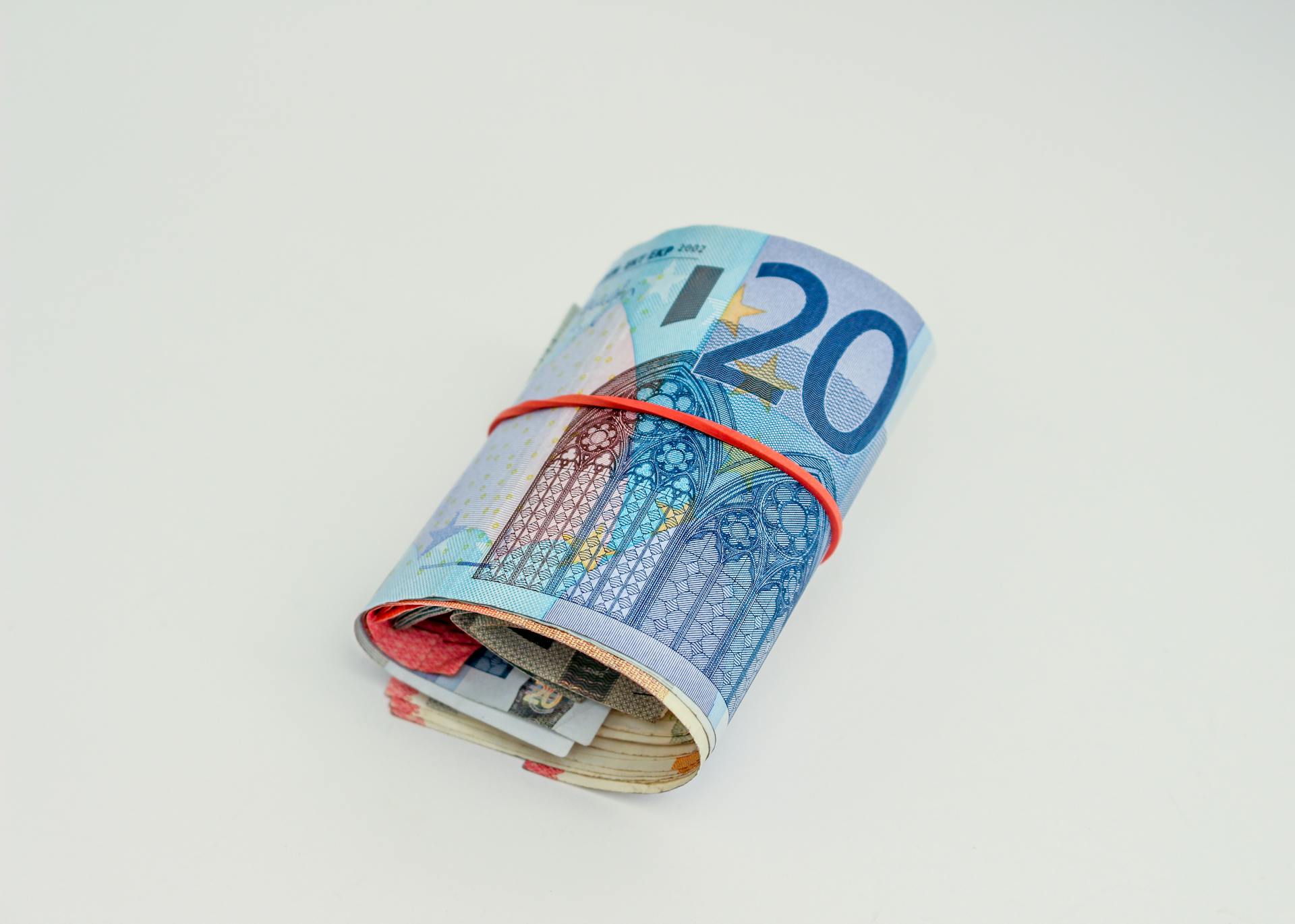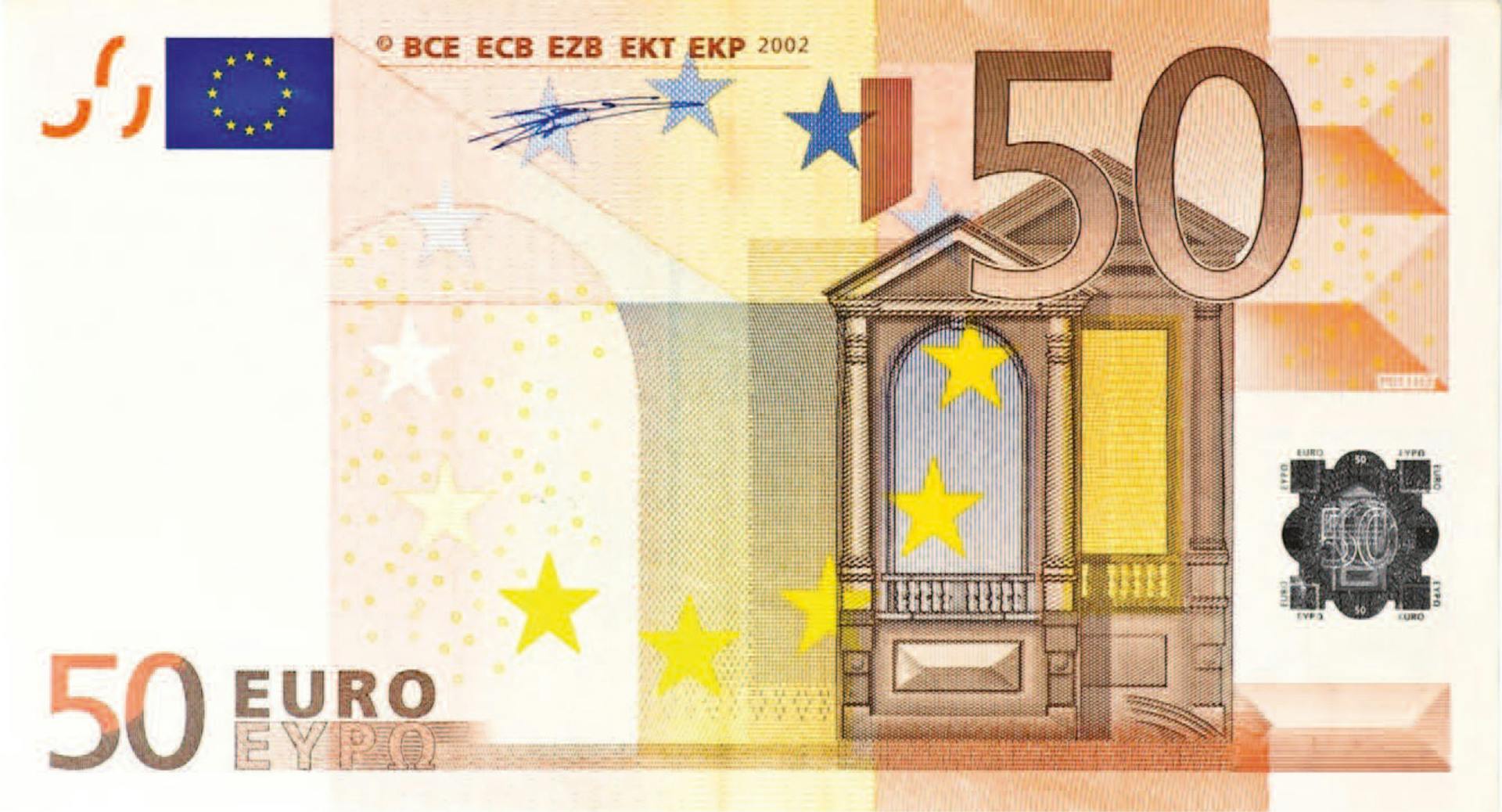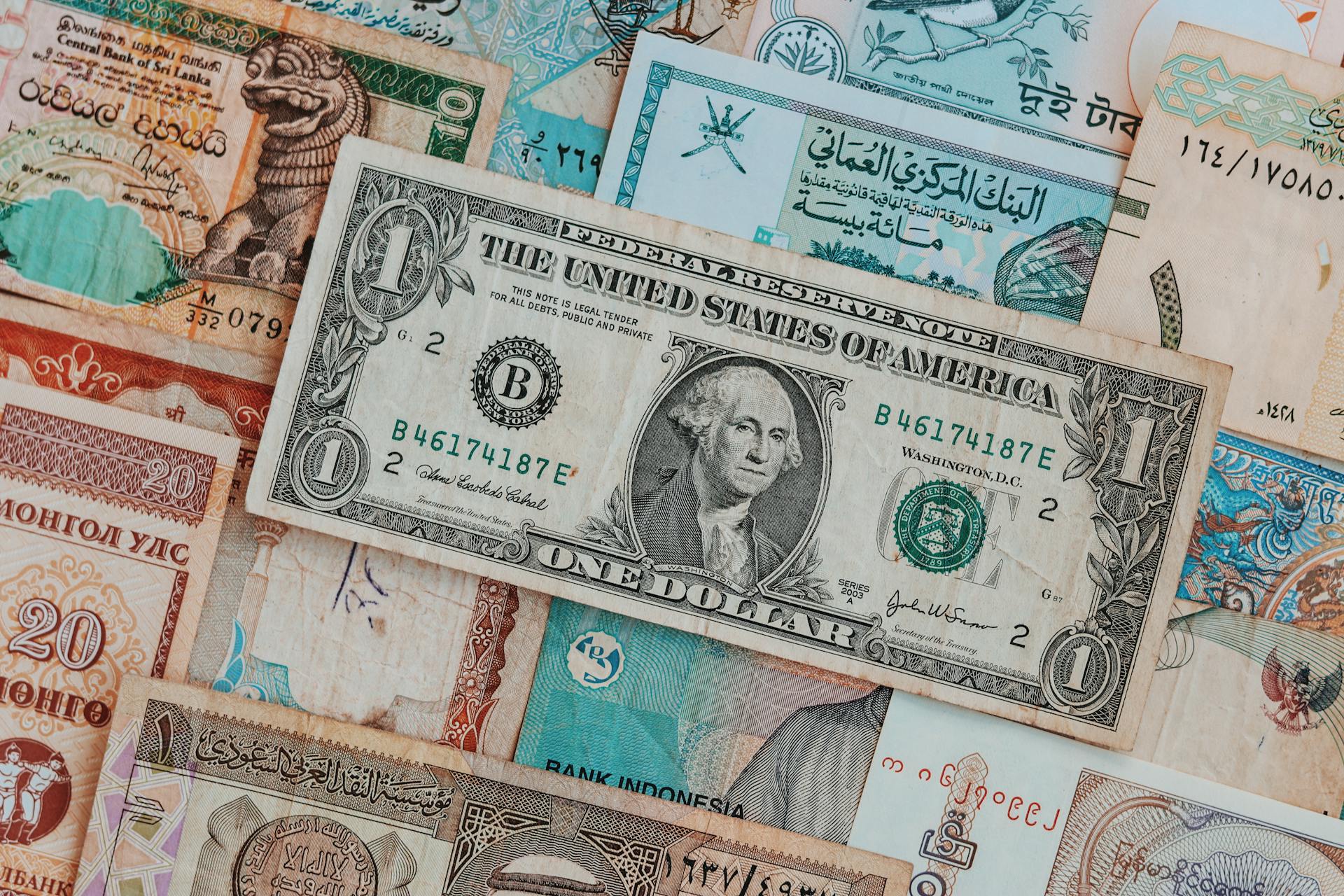
UK banknotes are a vital part of our everyday lives, and understanding how they work can make a big difference.
The Bank of England is responsible for issuing banknotes in the UK, with the first notes being introduced in 1694.
You can use banknotes to make purchases, pay bills, and even withdraw cash from ATMs.
Banknotes come in various denominations, including £5, £10, £20, and £50 notes.
The designs on UK banknotes are often changed to keep them secure and to celebrate British culture and history.
The polymer £5 note, featuring Sir Winston Churchill, was the first of its kind in the UK and was introduced in 2016.
You might enjoy: 5 Pound Banknote
Banknote Denominations
Banknote denominations in the UK are a straightforward affair, with notes available in £5, £10, £20, and £50 denominations.
The £5 note features Sir Winston Churchill, a former Prime Minister of the UK, and is a popular choice for everyday transactions.
You can easily spot a £10 note by looking for Jane Austen, the famous English novelist, on the front.
Readers also liked: 10 Hk Dollar
£10
The £10 note is a popular denomination, and its design has undergone a change in recent years. The current £10 note features Jane Austen.
You can spot a valuable £10 note by checking its serial number. Notes with low serial numbers, starting with the code AA01, are particularly sought after by collectors.
These low serial number notes can sell for a significant amount, up to £67, as seen in an eBay sale earlier this year. However, the note's condition is also a factor in its value.
The £10 note has undergone a design change to a plastic and waterproof version, featuring Jane Austen. The new note includes a hologram with the crown, a see-through portrait of Queen Elizabeth II or King Charles, and Winchester Cathedral in gold foil.
If you're looking to buy or sell a £10 note, be aware that the condition and rarity of the note can greatly impact its value.
Curious to learn more? Check out: Currency Exchange Buy or Sell Rate
£20
The £20 note has undergone a significant change in recent years. The current polymer note features Alan Turing, a renowned scientist.
You can exchange your old £20 notes at banks or Post Offices before the 30 September deadline. This is because the Bank of England has warned that the deadline to exchange old £20 notes is fast approaching.
If you're unable to visit a bank or Post Office in person, you can deposit your old notes via post. However, be aware that sending your banknotes via post is done at your own risk.
A rare polymer £20 note with an interesting serial number recently sold on eBay for £317.57. This highlights that bank notes with striking serial numbers can be worth more to collectors.
The Bank of England issued the Adam Smith £20 note in March 2007, but it was later replaced by a new note featuring JMW Turner in 2020.
A unique perspective: How to Check the Value of Old Money
Fifty
The fifty pound note has had several iterations. The first governor of the Bank of England, Sir John Houblon, was depicted on earlier paper notes.
Matthew Boulton and James Watt were also featured on the fifty pound note.
In 2021, a polymer fifty pound note was released with a depiction of the famed codebreaker, Alan Turing.
Scottish
Scottish banknotes are issued by six banks in Scotland and Northern Ireland.
These banks are responsible for producing and circulating their own banknotes within their respective regions.
In Northern Ireland, the same six banks issue banknotes.
Banknotes issued by these banks are widely accepted and can be used to make purchases and pay bills.
Their denominations range from £5 to £100.
For another approach, see: Banknotes of Ireland
Security and Authenticity
As you handle UK banknotes, it's essential to verify their authenticity to avoid counterfeit notes. Bank of England banknotes have robust security features to ensure their genuineness.
All four denominations of Bank of England banknotes - £5, £10, £20, and £50 - are printed on polymer. This material provides a high level of security.
The security features are the same on both the King Charles III and Queen Elizabeth II notes. This consistency makes it easier to check the authenticity of the notes.
A large see-through window is a prominent feature on Bank of England banknotes. It displays a clearly defined portrait of either King Charles III or Queen Elizabeth II, along with the numerical value of the note and the words 'Bank of England' printed twice around the edge.
For more insights, see: Us Currency Security Features
The metallic image positioned over the window is another key feature. The foil is gold on the front of the £5 and £10 notes, gold and blue on the front of the £20 note, and gold and green on the front of the £50 note. The foil is silver on the back of all notes.
Here are the metallic image colors for each denomination:
You can also check the notes under a good quality ultra-violet (UV) light. The numerical value appears in bright red and green on the front of the notes, against a duller background.
The raised print on the front of the notes is another feature to verify their authenticity. You can feel the raised print on the words 'Bank of England' and in the bottom right corner.
The hologram in the silver foil patch below the main see-through window is a 3D image that changes when you tilt the note from side to side. It displays the words 'Pounds' and the value of the note.
Lastly, the 3D image of the coronation crown above the main see-through window is a distinctive feature of Bank of England banknotes. On the back of the notes, directly behind the silver crown on the front, there is a metallic, foil patch.
Explore further: Norwegian Crown
Frequently Asked Questions
Which UK banknotes are still valid?
Valid UK banknotes include Series G notes in £5, £10, £20, and £50 denominations, featuring Elizabeth II's portrait, until June 4, 2024
Can I still use Queen Elizabeth money?
Yes, Queen Elizabeth II banknotes remain legal tender and can still be used. You don't need to exchange them for new King Charles III banknotes.
How long can I use old 20 pound notes?
You can use old £20 notes until 30 September 2022, after which they will no longer be accepted as payment.
What can I do with old 20 pound notes?
You can deposit old £20 notes into any UK bank account at a Post Office or exchange them at one of 48 designated branches, even without a bank account. Find out more about exchanging old banknotes at the Post Office.
What bank notes are accepted in the UK?
Bank of England notes are the only legal tender in England and Wales. Other UK banknotes, such as Scottish and Northern Irish notes, are not mandatory but may be accepted by creditors and traders
Sources
- https://www.bankofengland.co.uk/banknotes/current-banknotes
- https://www.tripsavvy.com/uk-currency-photographs-4123326
- https://www.bankofengland.co.uk/banknotes
- https://www.the-independent.com/news/uk/home-news/old-banknotes-england-exchange-deadline-b2168592.html
- https://www.thesun.co.uk/money/14450782/rare-valuable-british-banknotes/
Featured Images: pexels.com


